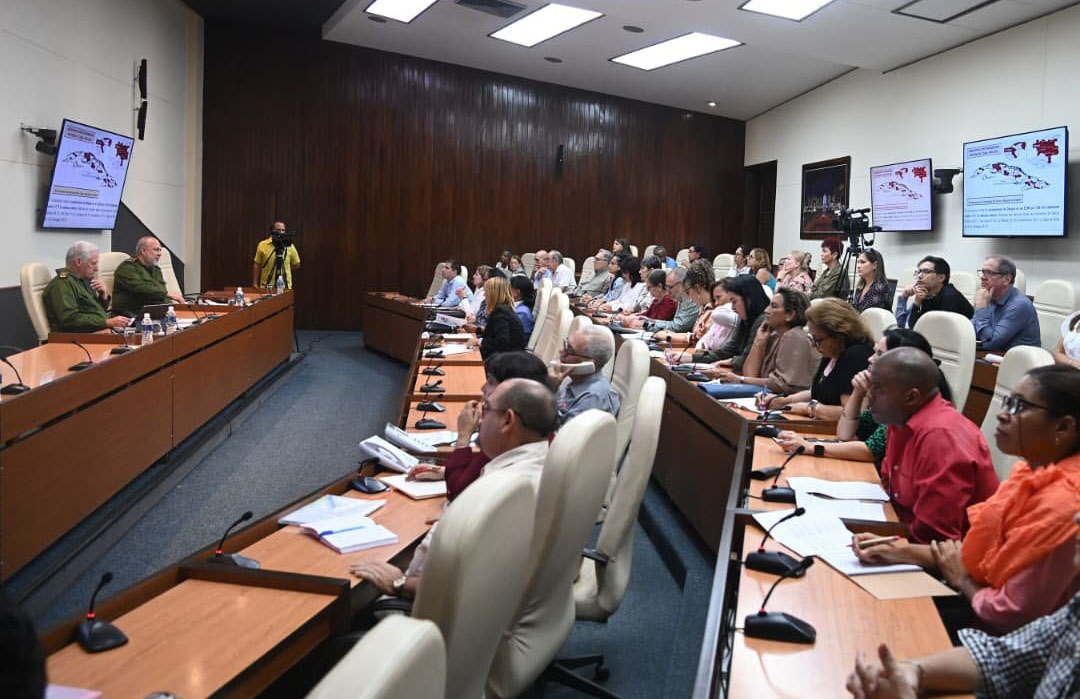Miguel Díaz-Canel, First Secretary of the Central Committee of the Communist Party of Cuba and President of the Republic, led a meeting in Havana with experts to analyze measures to protect children in light of the increase in chikungunya virus infections.
At the meeting, held this Tuesday, Díaz-Canel stressed the need to prioritize preventive and control measures to reduce infections, with greater intelligence and effectiveness, and reiterated the State’s commitment to protecting children, the Presidency reported.
Manuel Marrero Cruz, member of the Political Bureau and Prime Minister, also attended the meeting, where specialists presented clinical evidence and results of recent research on the behavior of the disease in the country.
Dr. Tania Roing Álvarez, head of the National Neonatology Group, explained that transmission can occur from mother to child during childbirth while the virus is viremic, as well as through mosquito bites, and that the disease can be severe in newborns.
Ileana Álvarez Lam, a pediatric infectious disease specialist, indicated that a three-stage response strategy was designed: identification of clinical manifestations by age group, recognition of warning signs, and development of an algorithm for pediatric care.
Among the warning signs mentioned are irritability, drowsiness, changes in bowel movements, lack of interest in feeding, and abdominal distension, which require constant monitoring by families.
The National Director of Primary Health Care, Yagen Pomares, reported that measures are being reinforced, such as the admission of pregnant women to maternity homes starting at 37 weeks, the administration of Biomodulin T, and daily follow-up of newborns and postpartum women in the community.
Raúl Guinovart Díaz, dean of the Faculty of Mathematics and Computing at the University of Havana, explained that the applied mathematical models show a peak in the epidemic and an increase in cases, which demands intensified vector control in all possible scenarios.
IMAGE CREDIT: ACN | Photo: Estudios Revolución
[ SOURCE: AGENCIA CUBANA DE NOTICIAS ]

